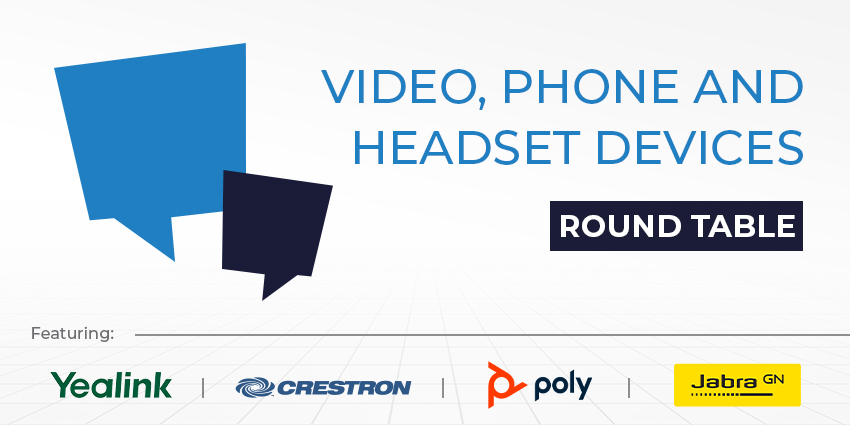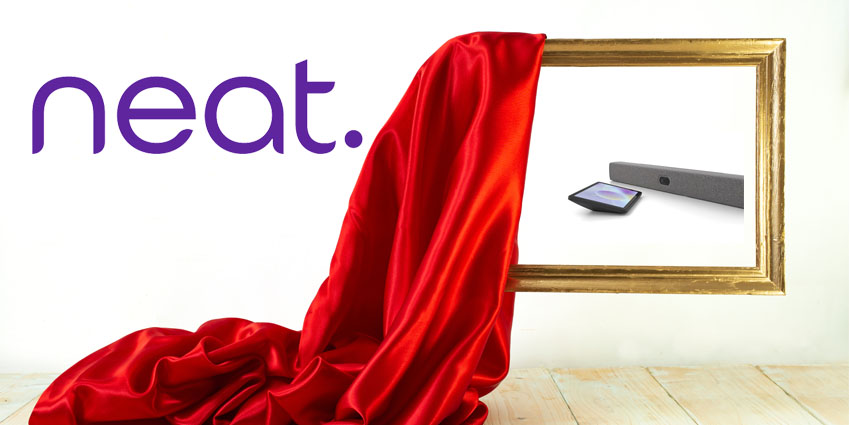Devices are key to the hybrid model of working that is evolving around us.
As that transformation continues, organisations need to consider what devices best suit their needs and allows their employees to work from anywhere. Analyst house Gartner has forecast that global spend on devices will hit $794bn in 2021, a year-on-year increase of 14 percent, and growing to over $800bn in 2022.
We asked senior executives from Yealink, Crestron, Poly and Jabra four questions on the challenges associated with hardware in a hybrid working world.
1) What challenges are businesses facing when it comes to devices and hybrid working?
Sofocles Socratous, Vice President Northern Europe at Poly:
“One challenge that businesses face is adapting the needs of their employees and creating equal experiences regardless of location. To get the most out of the workforce, organisations must understand individual working personas.
“If they invest in the same device for all, they won’t fix issues around performance or engagement. Instead, business leaders must recognise the different types of persona, from ‘flex worker’ to the ‘office collaborator’”
“For instance, those on calls or virtual meetings may prefer lightweight devices or headsets that prioritise comfort over portability. Those that work from home might prioritise noise cancellation. It’s only by recognising these differences that businesses can provide high-quality solutions that support employees to perform at their best.”

Nigel Dunn, Managing Director, EMEA North at Jabra:
“Businesses are now facing the realisation that hybrid working is not just a phase but is here to stay. The challenge is how to maintain the levels of productivity and gains that we know are possible.
“Organisations must assess if current set ups are still effective and sustainable in the long-term. This means ensuring that devices are not only fit for purpose today but investing in the right technology and adopting an approach that continues to keep teams motivated and engaged – wherever they are.
“Safeguarding the well-being of staff is a priority and ongoing challenge as we adapt to the new normal. Hybrid working brings added complexity from staff working in changing and disruptive environments. Business must look at whether they have the tools and insights to minimise factors that contribute to stress – such as working in noisy environments – and take the necessary steps to make changes.”
Andrew Gross, Vice President Enterprise Sales at Crestron:
“One of the major issues is that you can clearly see a difference between people calling in from home and those together in a meeting room. As a result, not all meeting participants feel equally involved. Sure, being seen and heard equally is important, but enhanced camera and microphone technology is just the start. The enhancement of collaboration software will also make a difference. Zoom recently made Smart Gallery View available, and Microsoft is working on a similar feature.
“On the hardware side, uptime, security, and quality are pain points. Luckily, prosumer devices can help here: enterprise-grade hardware that looks like it belongs in the home, but is enabled and hardened by the management that you would get in the office”
2) What devices are you seeing increasing demand for and why?

Sofocles Socratous, Vice President Northern Europe at Poly:
“This year, intelligent control and high-quality audio, video and collaboration devices have been increasing in demand as they are essential in levelling the playing field between those in the traditional office, and those who choose to work from elsewhere. Video helps remote participants get as close as possible to the experience of being in the same room.
“As hybrid working becomes the norm, it will be essential to ensure business operations can run smoothly while also improving company culture. True collaboration requires great systems tailored to individual’s needs. This requires more than just simple web cameras. Organisations must acknowledge that the devices in the office need to be aware of the room, participants, and the meeting flow to deliver that “in the room” feel to remote participants.”
Nigel Dunn, Managing Director, EMEA North at Jabra:
“Digital transformation shows no sign of slowing down as organisations continue to invest to ensure that they are not left behind.”
“We are now seeing a shift in priorities as companies make more strategic decisions and invest in solutions that are not just seen as a quick fix, but that have the quality and longevity to enable them to grow and support their needs both now and in the future”
3) How are you standing out in a crowded market?
Vincent Gao, Principle Product Manager – Teams Device Solution at Yealink:
“With 20 years of experience in unified communication, Yealink is committed to develop industry-leading technologies and product innovation to improve communication efficiency for clients.
“Partnered with leading Cloud UC companies like Microsoft, Zoom and others, we offer full-scenario solution including desk phones, personal devices and meeting room devices that can meet businesses’ needs in the meeting room, office, and on-the-go”

Andrew Gross, Vice President Enterprise Sales at Crestron:
“At Crestron, we have been shaping a smart workplace and smart living space with cutting-edge technology, long before it became fashionable or necessary. We are the only manufacturer in the world that has extensive experience in AV and UC and residential solutions, which is exactly the mix that is in high demand nowadays.”
Nigel Dunn, Managing Director, EMEA North at Jabra:
“Jabra’s audio and video solutions have been designed to make flexible working productive and easy. We have introduced unique features that give users a consistent, first-class experience with intelligent video and outstanding audio that makes remote collaboration feel as natural as being in the same room.”
Sofocles Socratous, Vice President Northern Europe at Poly:
“Poly understands that the user experience means uninterrupted and continuous collaboration, but no user is the same. By offering exceptional standards of visual and audio communications along with global support, managed and professional services, Poly allows businesses to tailor solutions to each user’s needs.
“A one-size-fits-all approach doesn’t work. In an era of hybrid working, suppliers must recognise this to enable equality between office and home workers. Our innovation also brings Acoustic Fence and Block AI technology to our portfolio, improving the users experience not mattering where they are operating from.”
4) How should businesses decide which devices are right for them?
Andrew Gross, Vice President Enterprise Sales at Crestron:
“Businesses must try devices for themselves before deciding if the investment is worth it; the only way to do that, is by doing trials, demos and proof of concepts, installed professionally in a fully updated room that showcases the entire concept of the modern meeting space.
“A lab setup doesn’t work, as it doesn’t allow all the different types of people that work at the company – who all approach technology differently – to actually use the technology that is available. Without real life experience, there’s no way to decide on the efficiency increase beforehand.”

Vincent Gao, Principle Product Manager – Teams Device Solution at Yealink:
“The primary consideration for organisations is to be fully aware of what your business really needs. They should take into account the company’s office setting or working mode.
“For example, if a corporate has a bunch of information workers who have a fixed desk for daily work, then the IP phone with handset and hard dial pad would be a good choice for them, allowing the user to dial out and pick up calls easily.”







